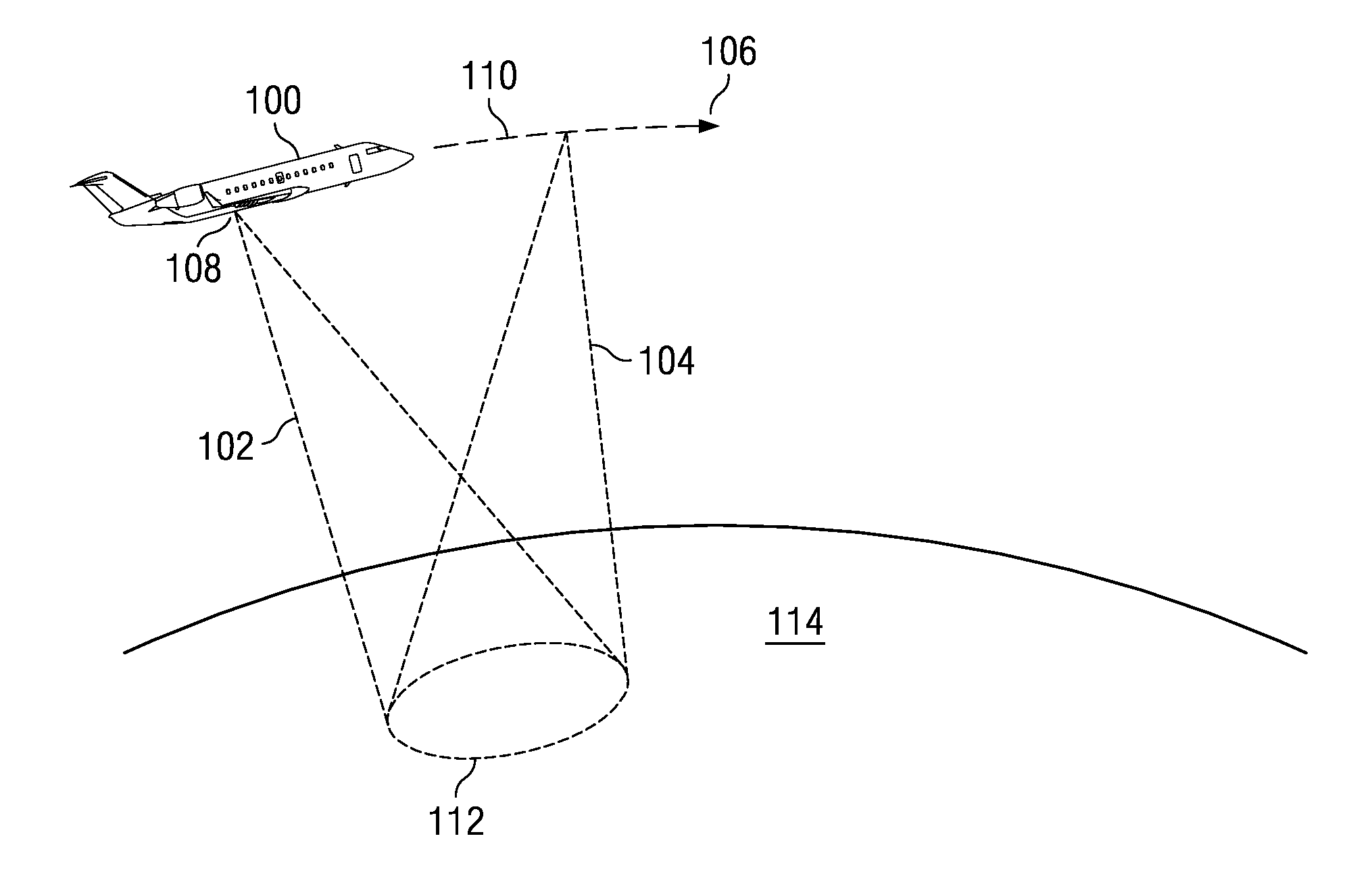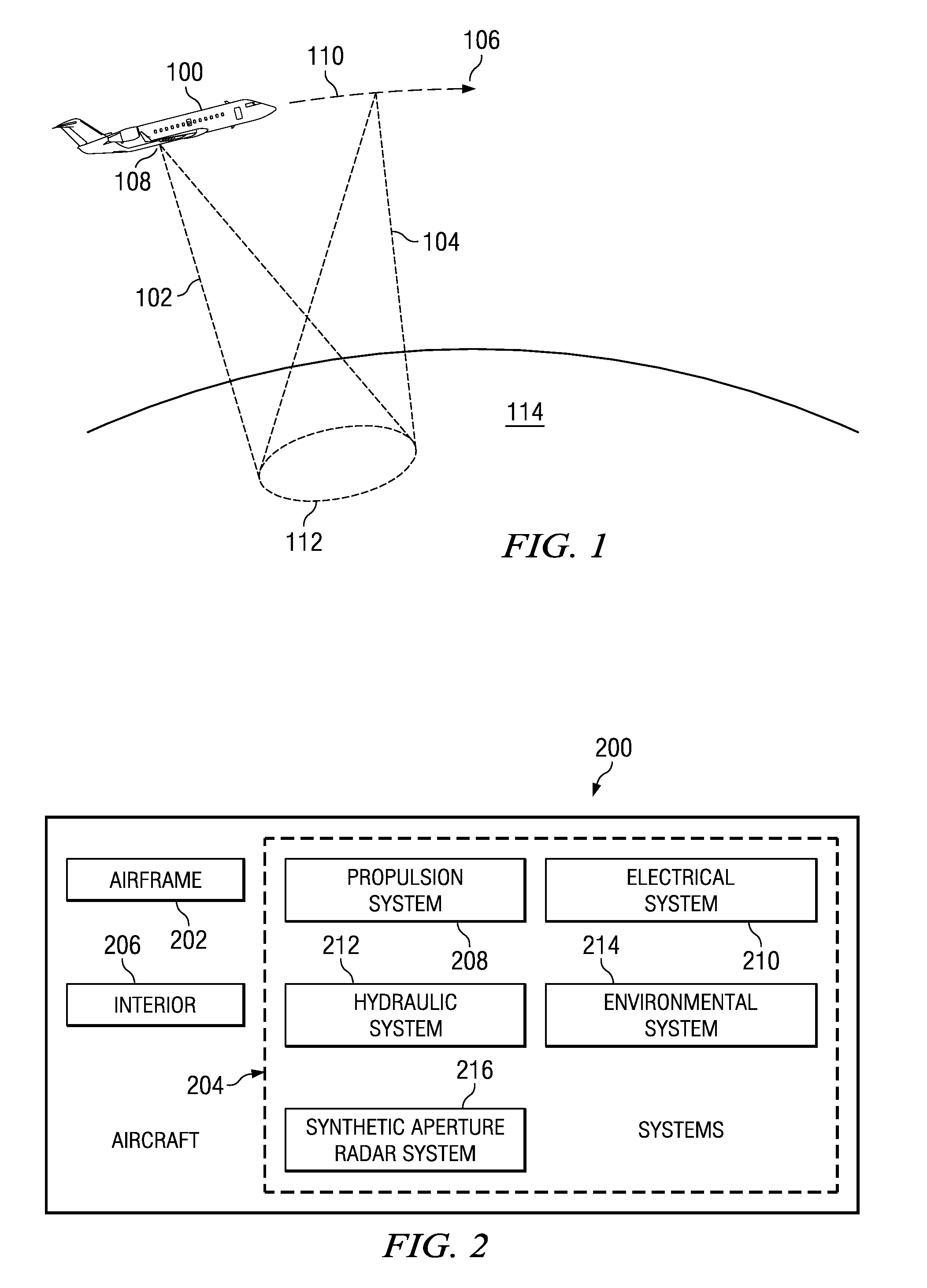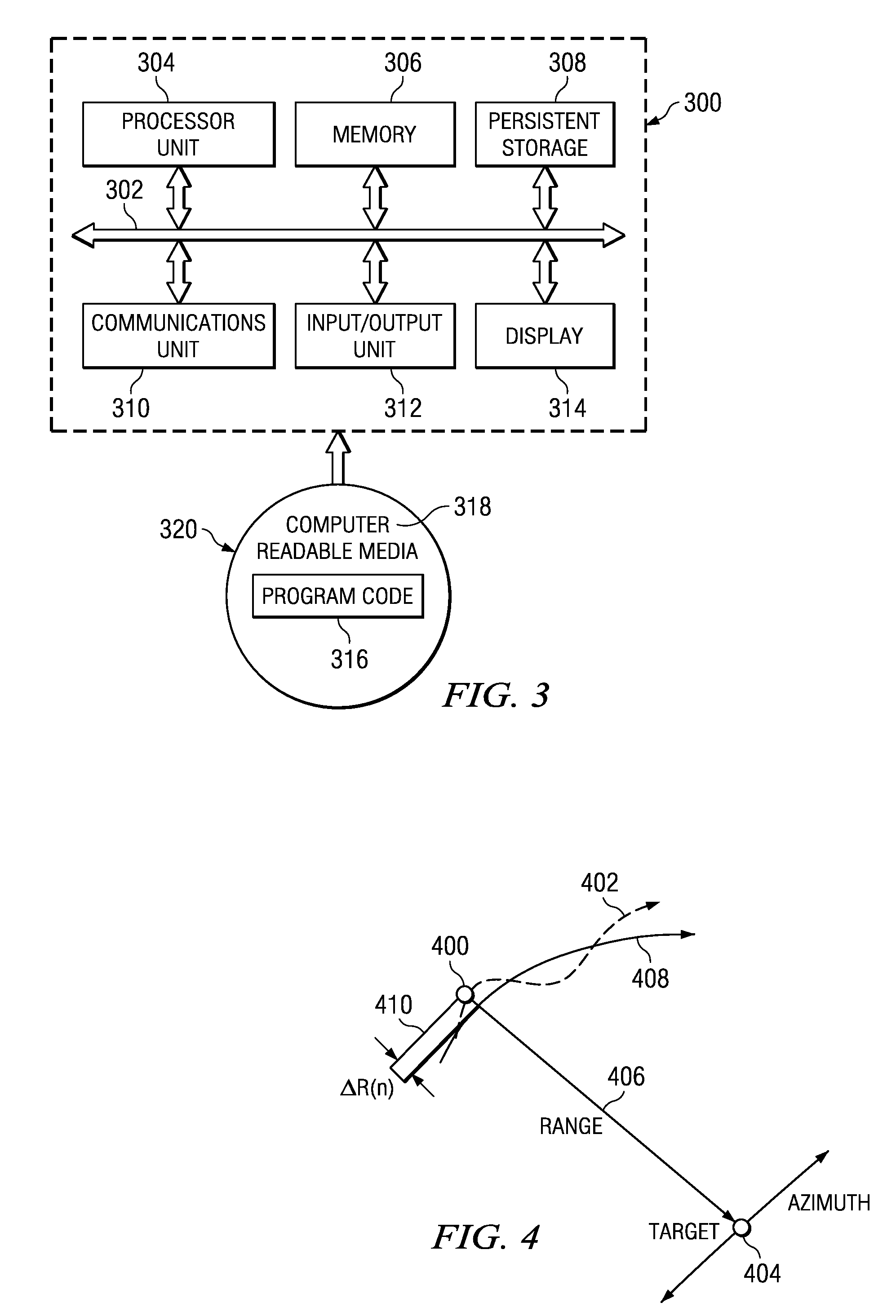Autofocus for minimum entropy through multi-dimensional optimization
a multi-dimensional optimization and autofocus technology, applied in the field of data processing system, can solve the problems of residual phase error, degrade the image quality, and smeared cross of synthetic aperture radar images, and achieve the effect of reducing the entropy value and minimizing the entropy value generated
- Summary
- Abstract
- Description
- Claims
- Application Information
AI Technical Summary
Benefits of technology
Problems solved by technology
Method used
Image
Examples
Embodiment Construction
[0028]With reference now to the figures and in particular with reference to FIG. 1, a diagram illustrating the collection of data by a synthetic aperture radar system for the case of spotlight mode is depicted in accordance with an advantageous embodiment. In this example, aircraft 100 may include a synthetic aperture radar system, which may generate an array of pulses such as, for example, pulses 102 and 104 while aircraft 100 travels along the direction of dotted line 106. The different dots in dotted line 106 may represent sampling points.
[0029]For example, pulse 102 is generated at dot 108, while pulse 104 is generated at dot 110. In these examples, pulses 102 and 104 are radio frequency pulses that illuminate or target section 112 on ground 114. Aircraft 100 receives return or response signals from pulses 102 and 104. These responses form radar data. These responses may be recorded as amplitude and phase to form the radar data. In other words, the radar data may take the form o...
PUM
 Login to View More
Login to View More Abstract
Description
Claims
Application Information
 Login to View More
Login to View More - R&D
- Intellectual Property
- Life Sciences
- Materials
- Tech Scout
- Unparalleled Data Quality
- Higher Quality Content
- 60% Fewer Hallucinations
Browse by: Latest US Patents, China's latest patents, Technical Efficacy Thesaurus, Application Domain, Technology Topic, Popular Technical Reports.
© 2025 PatSnap. All rights reserved.Legal|Privacy policy|Modern Slavery Act Transparency Statement|Sitemap|About US| Contact US: help@patsnap.com



